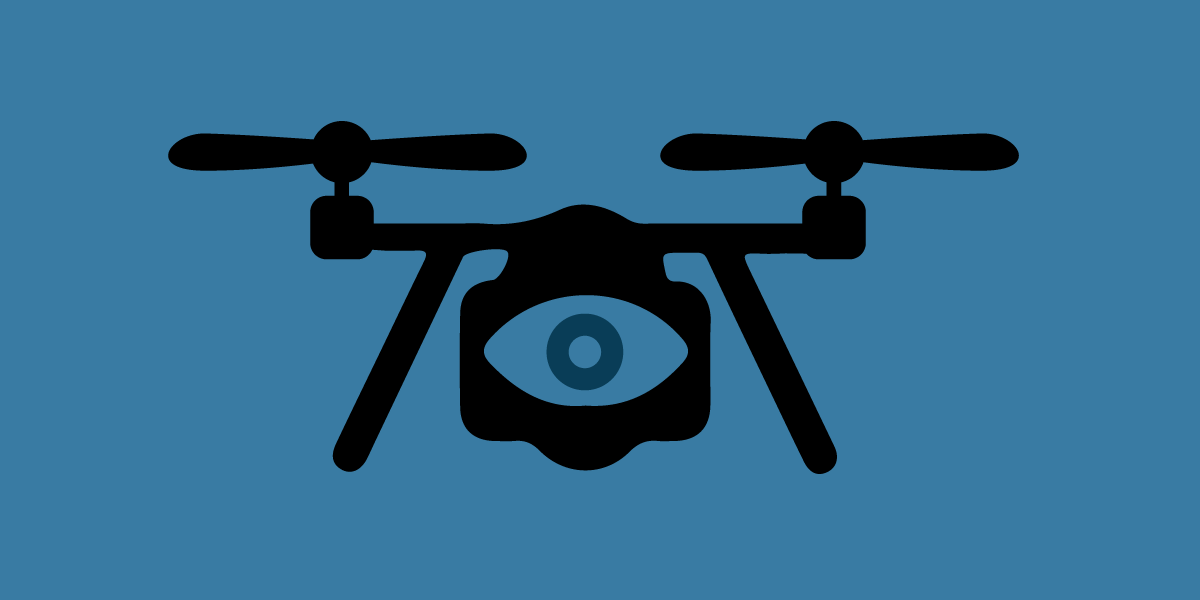An increasing number of cities are adding drone flights to their law enforcement tool kit. Public access to appropriately redacted video footage from those flights can provide oversight of police surveillance and help ensure cities are living up to their privacy promises.
Every second of every drone video should not be categorically exempt from public records laws as an investigatory record. This is the argument of an amicus letter filed in California state court last week by EFF, the First Amendment Coalition, and the Reporters Committee for Freedom of the Press.
The case centers around journalist Arturo Castañares, publisher of La Prensa San Diego, who requested drone flight videos created by the Chula Vista Police Department, under the California Public Records Act (CPRA). The department, which serves one of the largest cities along the Southern border, touts its program as one of the first in the country to use drones as first responders to emergency calls for police service, and the agency has advocated for other law enforcement to create similar programs in other cities in both the U.S. and Mexico. EFF has previously raised alarm that the relative cheapness of deploying drones—compared to helicopters or on-the-ground policing—encourages more surveillance.
In denying the public records request, the city claimed the videos were categorically exempt from disclosure under the CPRA because they are investigatory records. After the requester sued, the trial court agreed with Chula Vista and ruled that it would be unduly burdensome to require the city to review the video footage and release redacted versions. The requester has asked the California Court of Appeal to reverse the trial court’s decision.
EFF’s amicus letter filed in the appellate court argues that the CPRA’s investigatory records' exemption must be construed narrowly, and that the city did not carry its burden to prove that either (1) all drone flights derive from a targeted criminal investigation, or (2) that every moment of footage is exempt. The city’s own policies note that it deploys drones for noncriminal matters, such as to evaluate damage after a natural disaster, and that its drones record video even before the drone arrives at the scene and when it is returning to base. At minimum, that footage is not likely to reflect any specific investigation. The letter also points to other cases where the government released redacted documents, even though the redaction process was much more burdensome than this case.
More generally, the CPRA’s investigatory records exemption is not a broad shield that allows police to withhold their surveillance technology from the public. Indeed, EFF and the ACLU of Southern California fought all the way to the California Supreme Court to ensure that the public can obtain records from a similar law enforcement tool: Automated License Plate Readers.
Aside from pointing out legal errors, the letter highlights how appropriately redacted footage can provide an oversight mechanism for new police surveillance. For example, Chula Vista says that it generally tries to avoid recording areas where people have a reasonable expectation of privacy. The policies instruct that drone operators might turn the camera away from sensitive areas, zoom out, or point the camera up at the sky during return flights. Do operators follow those policies in practice? Redacted footage would help the public verify that the police are complying with their own rules.
As police departments increasingly use new surveillance technology, public records requests—in addition to privacy laws and litigation—must remain an essential check on these powers.
“The CPRA is an important accountability tool that should be interpreted to allow oversight of modern law enforcement technologies,” EFF wrote in the amicus letter. “If the investigatory record exemption does broadly shield drone footage from ever being disclosed, it would blunt public understanding of a technology that is being used to replace basic police activity. And that reasoning could worryingly be applied to future technologies.”
May 23, 2023 Update: The third paragraph of this blog has been edited to include the name of the plaintiff in the CPRA case, additional links, and Chula Vista's proximity to the U.S.-Mexico border.












